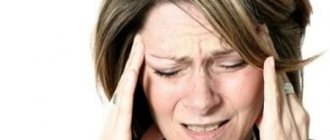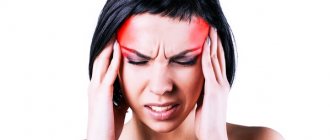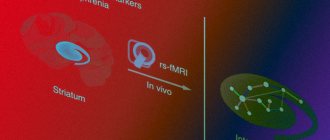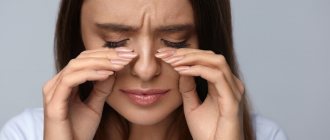“Sitting at a table near the cafe, I felt very strange. My body went numb, my fingers turned into claws, my lips wrinkled, and I completely stopped feeling my tongue. I felt like I was having a stroke at the age of 25. When the ambulance arrived, they loaded me into the car, and the muteness began to recede. I felt that I could speak again, but at the same time I felt trembling throughout my body, and my heart was beating at a speed of almost 200 beats per minute.”
This is how a young woman named Abi described her first panic attack. Her story ended well: Abi managed to overcome panic disorder and became a volunteer helping other people suffering from this illness.
Medical statistics show that about 5% of residents of large cities around the world live with panic attacks. However, there is no single pattern according to which panic disorder begins and develops.
In fact, it may not develop. It happens that a panic attack remains the first and last in a person’s life.
For others, panic attacks occur regularly, both for no reason or as a result of a developed phobia, for example, fear of public speaking. This happens to women more often than to men.
What is a panic attack?
Loss of control and fear of death: what a person feels during an attack
First of all, this is a feeling of loss of control over the situation, a feeling of doom and fear of death. A person may feel like they are losing consciousness or that they are having a stroke or heart attack.
A panic attack is usually accompanied by some or all of the following physical symptoms:
increased heart rate;
feeling of weakness in the limbs (“woolly legs”) or the whole body;
dizziness or headache;
a rush of heat or cold;
nausea;
chest or stomach pain;
severe shortness of breath.
All this may also be accompanied by a feeling of unreality of what is happening, loss of contact with the outside world.
A panic attack usually lasts from 5 to 20 minutes. With a long attack, the symptoms reach their peak at the tenth minute.
It also happens that the symptoms begin to weaken, after which a second wave begins, and they again reach their peak.
And in people with an anxiety disorder, the same symptoms may appear slightly milder, but over a longer period of time.
Anxiety disorders
This is a group of mental disorders characterized by severe causeless anxiety or fear. There are several types of anxiety disorders: generalized anxiety disorder; specific phobias; social anxiety disorder. Despite the existence of effective treatments, many sufferers of anxiety disorders do not receive adequate diagnosis or help, and the disorder becomes chronic, with a significant impact on quality of life.
If panic attacks occur in response to specific stimuli (for example, when being in a crowd of people), then this is evidence of a phobia. The origin of phobias is still unknown; people can be afraid of the most unexpected things.
If attacks occur in the absence of a trigger, if no logic can be traced in their onset, then the person is diagnosed with “panic disorder.”
In previous sections, we talked about how chronic stress gradually destroys the cardiovascular system and each subsequent stressor makes it even more vulnerable. But one of the most striking and best-known features of heart disease is that heart attacks are common during stressors. A person receives unpleasant news; his wife died; he lost his job; a child who is considered long dead returns home; he wins the lottery. The man cries, screams, rejoices, sighs, holds his breath, amazed by the news. Soon he suddenly clutches his chest and falls dead from sudden cardiac arrest. A strong negative emotion, such as anger, doubles the risk of a heart attack within two hours of its onset. Thus, during the trial of O. J. Simpson, Bill Hodgman, one of the prosecutors, began to experience chest pains when he stood up for the 20th time to argue with Johnnie Cochran, and even fainted (don't worry, he survived) . Because the cardiovascular system is so vulnerable to strong feelings, every Las Vegas casino has a defibrillator. There is even evidence that traveling to New York is a significant risk factor for heart attacks¹.
__________________________________________
¹ This is evidenced by the results of a famous study published in 1999 by Nicholas Christenfeld and colleagues from the University of California at San Diego (did you expect it to be New York University?). The authors did an excellent job of ruling out other factors. They showed that this risk does not occur in other cities in the country. Its reason is the unconscious choice of place of residence (that is, who, except the eternally tense, prone to illness
This phenomenon has been well studied. In one study, a doctor collected newspaper clippings that reported the sudden death of 170 people from cardiac arrest. He identified events that appeared to be associated with these deaths: illness, death, or the threat of loss of a loved one; acute grief; loss of status or humiliation of self-esteem; mourning, anniversary of the death of loved ones; physical danger; threat of injury or rehabilitation period after injury; an important victory or intense joy. Other studies have confirmed these findings. During the 1991 Gulf War, a decrease in fatalities in Israel was attributed to missile malfunctions rather than a decrease in the incidence of sudden cardiac death among frightened pensioners. The 1994 Los Angeles earthquake also saw a spike in heart attacks¹.
The actual causes are obviously difficult to determine (since it is impossible to predict what might happen, and it is impossible to interview dead people to find out how they felt), but in general cardiologists agree that sudden cardiac arrest is simply an extreme case of acute cardiac arrest. stress causing ventricular arrhythmia or, even worse, ventricular fibrillation and ischemia². As one might assume,
_________________________________
hearts of crazy people, wants to live in New York?). It is not a function of socioeconomic status, race, ethnicity, or immigrant status. It's not that people happened to be in New York at a time of day when heart attacks are generally more common (like commuters during work hours, for example). And not New York doctors, who often confuse other illnesses with heart attacks. The most common causes were anxiety, fear, and greater disruption of sleep-wake cycles than elsewhere. And this was before the September 11 attacks. Naturally, like all other native New Yorkers, this study gives me a kind of perverse pleasure, and I cannot argue with its conclusions.
¹ I once received a letter from the Chief Medical Examiner of Vermont describing his investigation of what he believed to be a case of stress-induced cardiac arrest: an 88-year-old man with heart disease died of a heart attack next to his favorite tractor, barely able to get out from home. His 87-year-old wife was found dead in the barn, also having died of a heart attack, but later than he did (she had no previous history of heart disease, and the autopsy found no abnormalities). Next to her lay a bell, with which she called him into the house to have dinner.
² Don't be afraid of this jargon. In ventricular fibrillation, half of the heart, called the ventricle, begins to contract rapidly and chaotically, but does not pump blood as well as it should.
it is related to the sympathetic nervous system and occurs more often in damaged heart tissue than in healthy tissue. A person can die from sudden cardiac arrest even if he has never suffered from heart disease, despite increased blood flow in the coronary vessels; however, autopsy often shows that such people had significant atherosclerosis. Sometimes completely mysterious cases occur when seemingly healthy 30-year-old people who do not suffer from atherosclerosis become victims of sudden cardiac arrest.
Fibrillation appears to be the most important event in sudden cardiac arrest, based on animal studies (for example, ten hours of stress makes a rat's heart more vulnerable to fibrillation over the next few days). As one of the reasons, the muscle of a diseased heart becomes more electrically excitable and therefore prone to fibrillation. Additionally, the activation of heart-stimulating factors becomes erratic during times of extreme stress. The sympathetic nervous system sends two symmetrical neural pathway projections to the heart; theoretically, during strong emotional arousal, these two projections are so activated that they lose coordination with each other - severe fibrillation compresses the chest, and the person falls.
Deadly pleasures
Among the various causes of sudden cardiac arrest, one is especially interesting: an important victory or intense joy. Consider the scenario where a person dies after learning that he won the lottery, or when death occurs during sex - but here the person at least dies happy. (Several decades ago, such a case occurred with the former vice president of the United States; the medical details of the incident became the object of especially careful study because the patient was found not in the company of his legal wife.)
The possibility of dying from pleasure seems absurd. Aren't stress-related diseases caused by stress? Can a joyful event destroy us in the same way as a sudden grief? The fact is that the manifestations of both are very similar from a physiological point of view. Intense anger and intense joy have different effects on the physiology of the reproductive system, on growth function, and most likely on the immune system; but regarding the cardiovascular system, their effects are very similar. Once again, we are dealing with the basic concept of stress physiology, which explains similar reactions to different situations: it doesn’t matter if we are too hot or too cold, we are prey or predator, some organs of our body, including the heart, do not care which way we are knocked out of allostatic equilibrium, they are only interested in the degree of imbalance. Whether we weep and bang our heads against the wall in grief or jump and scream in ecstasy of joy, both make serious demands on a sick heart. In other words, our sympathetic nervous system probably has roughly the same effect on our coronary arteries whether we're experiencing a blind rage or a mind-blowing orgasm. Diametrically opposed emotions can have remarkably similar physiological expressions (this reminds me of the famous quote by Elie Wiesel, the writer and Nobel laureate and Holocaust survivor: “The opposite of love is not hatred. The opposite of love is indifference”). When it comes to the cardiovascular system, anger and ecstasy, grief and joy, become equal challenges to allostatic balance.
Women and heart disease
Although men are more likely to have heart attacks than women, heart disease is the leading cause of death among women in the United States, accounting for 500,000 deaths per year (compared to 40,000 deaths per year from breast cancer). And the incidence of heart disease among women has been rising, while mortality from cardiovascular disease among men has been declining for decades. In addition, while the severity of heart attacks in women is equal, they are twice as likely to cause disability as in men.
What does this data say? The increased likelihood of disability after heart attacks may be an epidemiological incident. Women are still less likely to have heart attacks than men and, on average, begin having heart attacks ten years later. Therefore, if a man and a woman have the same serious heart attack, the woman will statistically be ten years older than the man. And therefore it will be more difficult for her to recover.
But what about the rising incidence of heart disease among women? It is associated with various factors. In the United States, obesity is a serious problem primarily among women, and it increases the risk of heart disease (as we will see in the next chapter). Additionally, although smoking rates in the United States continue to decline, they are falling more slowly among women than among men.
Naturally, stress also plays an important role. Kaplan and Carol Shively studied the subordination hierarchy of female monkeys and noted that chronically subordinate animals developed atherosclerosis twice as often as dominant females, even on a low-fat diet. Evidence related to social hierarchy has also been obtained from human studies. The increase in the number of cardiovascular diseases in women began during the period when they began to actively work outside the home. Maybe this causes stress? Some studies have shown that working outside the home does not increase the risk of heart disease in women. Provided that they are not busy with clerical work. And provided that they have a good relationship with the boss. So try to figure it out. And just to dispel the myth that as more women work outside the home, the more men take on household duties, another factor that increases the risk of heart disease in women who work outside the home is having children.
Why does stress increase the risk of cardiovascular disease in female primates and women? Due to the actions of our "prime suspects" - too much stimulation of the sympathetic nervous system, too much production of glucocorticoids. But there is an additional factor that causes very controversial assessments - estrogen.
When the previous edition of this book was published, no one was interested in estrogens. It has been known for decades that estrogen protects against cardiovascular disease (as well as stroke, osteoporosis, and possibly Alzheimer's disease), mainly because estrogen acts as an antioxidant, ridding the body of harmful oxygen free radicals. This explains why serious heart disease in women often occurs after menopause, when estrogen levels drop. This was widely known and was one of the rationales for estrogen hormone therapy after menopause.
The important role of estrogens in protection against cardiovascular diseases is indicated not only by morbidity statistics among the population, but also by serious experimental studies. As we will see in Chapter 7, stress causes estrogen levels to decrease, and Kaplan's subordinate female monkeys had estrogen levels as low as ovariectomized monkeys. And if a female who had had a low status for many years was given synthetic estrogen, raising its level to the level characteristic of dominant females, then her risk of atherosclerosis decreased. Remove the ovaries of a high-status female and she risks developing atherosclerosis. The conclusions of such studies seemed clear.
Then, in 2002, a landmark report was published based on the Women's Health Initiative's study of thousands of women. Its purpose was to evaluate the effect of eight years of hormone therapy after menopause, when women took estrogens and progestins. This was expected to demonstrate exemplary protective effects of such therapy against cardiovascular disease, stroke and osteoporosis. After five years of research, scientists mixed up who took the hormone and who took the placebo. The ethics committee of this gigantic project called for it to be stopped. Why do you think? Maybe the benefits of estrogen and progestin were so obvious that the committee decided it was unethical to give half the women just a placebo? No. It turned out that estrogens and progestin increase the risk of heart disease and stroke so much (while still protecting against osteoporosis) that continuing the study is not only unethical, but simply dangerous to the lives of the subjects.
It was a real bomb. The main news of the year. Similar trials have been stopped in Europe. Pharmaceutical companies began to stop production. A huge number of women who have entered menopause have begun to doubt that they need estrogen replacement therapy.
How could this happen? Conflicting results from years of clinical statistics and careful laboratory testing on the one hand, and extensive, excellent research on the other? One of the most important factors was that, for example, Kaplan's experiments studied only the effect of estrogen, while the most extensive clinical study studied both estrogen and progestin. Perhaps that makes all the difference. In addition (here is an example of the petty quibbles that scientists love and drive everyone else crazy), the dose of hormones mattered, as well as the type of estrogen (estradiol, estrol or estrone, synthetic or natural hormone). Finally, and this is also an important point, laboratory studies were based on the hypothesis that estrogen protects against the onset of atherosclerosis, but cannot get rid of it once it has already occurred. This is quite logical, because, given our Western style of nutrition, atherosclerotic plaques begin to form in us after 30 years, and not after menopause, that is, at 50 or 60 years.
The debate is still ongoing. It may be that taking estrogen after menopause does not protect against cardiovascular disease, but it is likely that estrogen produced in a woman's body at a younger age does. And stress, by reducing estrogen levels, can thereby contribute to the development of cardiovascular diseases.
Death by Witchcraft
It's time to explore a topic that is very rarely discussed in the scientific community. Proven examples of death from witchcraft are known in all traditional non-Western cultures. The person ate forbidden food, insulted a leader, slept with someone he shouldn't have slept with, or committed an unacceptable act of cruelty or blasphemy. Outraged villagers call a shaman, he performs some ritual manipulations in relation to the offender, sculpts a voodoo doll or “curses” the person in some other way. And the intruder falls dead.
Ethnobotanist Wade Davis and cardiologist Regis Desilva of Harvard researched this topic¹. Davis and Desilva object to the term "death by witchcraft" as it strongly smacks of Western condescension towards "native" loincloths, nose bones, etc. They prefer the term "psychophysiological death" and note that in many cases even this the term is not entirely accurate. Sometimes the shaman knows which one
________________________________________________
¹ Wade Davis is horror fans' favorite nerd. As detailed in the references section, his previous research focused on the possible pharmacological basis for the existence of zombies (humans in a trance without their own will) on the island of Haiti. Davis's Harvard doctoral dissertation on zombification was first published under the title "The Serpent and the Rainbow" (The Serpent And. The R in bow), and then it was made into a creepy horror film with the same name - the dream of any graduate student, the topic of the dissertation which raises doubts among reviewers.
villagers is seriously ill, and claims to have “cursed” him to confirm his reputation. Or a shaman can simply poison a person in order to thereby confirm his “magical” abilities. It also happens that a shaman curses a person in front of everyone, and the whole village says: “The curse works; this man is doomed, so don’t waste food and water on him.” A person who is not allowed to eat and drink simply dies of hunger; However, another curse has come true, and the shaman increases the fee for his services.
Nevertheless, cases of psychophysiological death do occur. They aroused the interest of some of the great physiologists of the last century. Walter Cannon (the man who invented the concept of “fight or flight”) and Kurt Richter (a great authority in the field of psychosomatic medicine) interpreted the mechanisms of psychophysiological death differently. Cannon believed that its cause was an overactivity of the sympathetic nervous system: a person is so excited by the fact that he was cursed that his sympathetic system “winds up”, narrows the blood vessels, they burst and this leads to a fatal drop in blood pressure. And Richter thought that the reason for such death was the overactive work of the parasympathetic system: a person, realizing the seriousness of the curse, simply gives up. At the same time, vagus nerve activity increases and the heart rate slows, until the heart stops, due to what he called a “vagal storm.” Both Cannon and Richter were never able to test their theories, since they were never able to find anyone who died from psychophysiological death, witchcraft or anything like that. It later turned out that Cannon was probably right. The heart almost never stops directly from a “vagal storm.” Davis and Desilva suggest that such cases are simply obvious examples of death from sudden cardiac arrest, when sympathetic activity leads to ischemia and fibrillation.
This is very interesting and explains why psychophysiological death can occur in a person who already has heart disease. But psychophysiological death in traditional societies has a strange feature: it can happen to a young person who is unlikely to have any cardiac pathology. This mystery remains unsolved, perhaps indicating a hidden risk of heart disease that we are not even aware of, or perhaps it demonstrates the power of cultural beliefs. As Davis and Desilva write, if faith can heal, it can also destroy.
Personality and Heart Disease: A Brief Overview
Two people find themselves in the same stressful social situation. But only one of them develops hypertension. Two people have been going through ups and downs for ten years. But only one of them develops cardiovascular disease.
Such individual differences may be due to the fact that one person already has a pathology of the cardiovascular system, for example, poor patency of the coronary arteries. Perhaps it is also due to genetic factors influencing the mechanics of the system - the elasticity of blood vessels, the number of norepinephrine receptors, etc. Perhaps the difference is the presence of risk factors - which of them smokes or eats more foods rich in saturated fats? (Interestingly, individual differences associated with such risk factors explain less than half the variance in heart disease.)
When two people face the same stressors, big or small, their risk of cardiovascular disease may also be related to their personality traits. In Chapters 14 and 15, we'll look at some of these factors—how hostility, Type A personality, and clinical depression increase the risk of cardiovascular disease. Unfortunately, such personal risk factors have a rather strong influence. But fortunately, there is often something you can do about it.
This discussion is the first example of the style of analysis that we will use in subsequent chapters. In a short-term physical emergency, the cardiovascular response is vital. But in a situation of chronic stress, the same reaction becomes dangerous. Its negative effects are especially harmful when interacting with the adverse effects of an overactive metabolic stress response, which we will discuss in the next chapter.
Previous – Chapter 3: Stroke, Heart Attacks and Death by Witchcraft | Next – Chapter 4. Stress, Metabolism and Asset Liquidation
Fight or flight from scratch
Photo: cottonbro/Pexels
What causes panic attacks?
There is research suggesting that there is a genetic predisposition to panic disorder, especially in women.
There is also a connection between panic disorder and high sensitivity to a variety of physical stimuli (sunlight, smells, weather changes), but to date there is not enough data to definitively say that such sensitivity is the cause of the disease.
It is unclear whether there is any feedback here. It is possible that it is panic disorder that aggravates the patient’s sensory perception.
The cause of the disorder may be serious psychological trauma or prolonged stress.
Scientists believe that during a panic attack, the human body enters a “fight or flight” state, which is quite natural in the face of real danger. If you encounter a bear in the forest, your body instinctively speeds up your breathing and heart rate, preparing to flee or physically fight back. During a panic attack, the same thing happens, but without a real stimulus.
Assessing the risk of myocardial infarction
To prevent a heart attack, you should consult a physician or cardiologist. To identify obesity, the doctor, based on weight and height, will calculate the body mass index for further recommendations. Here at the appointment they will measure your blood pressure and give you a referral for tests. In addition to primary data on cholesterol and glucose, it is desirable to obtain results on other parameters: blood clotting, hematocrit, creatinine, hemoglobin, urea. Based on the data obtained, if necessary, the doctor will prescribe preventive treatment that will help avoid a heart attack.
What to do?
Panic attacks themselves are not dangerous, but if nothing is done about them, they can get worse.
Panic disorder significantly reduces a person’s quality of life: it interferes with the performance of professional duties, visiting public places, traveling in public and even private transport (a person may be afraid of a panic attack and loss of control over the car).
If a panic attack occurs for the first time, you should visit a doctor, despite the fact that it may not happen again. As already mentioned, panic attacks in their symptoms resemble a heart attack, and therefore, first of all, it is necessary to find out what the patient is dealing with.
If the doctor does not find cardiovascular pathologies, then it is necessary to draw up a treatment plan for panic disorder and strictly adhere to it.
As a rule, the patient is recommended what is now commonly called a healthy lifestyle, and first of all, physical activity.
This can reduce the number of panic attacks, making them much more rare, but in a large number of cases it does not completely solve the problem.
Panic disorder is a type of anxiety disorder that, in addition to external causes, is associated with an imbalance of neurotransmitters (signaling molecules) in the brain, which cannot be easily corrected through lifestyle changes alone.
It is often necessary to resort to drug treatment. Benzodiazepine drugs are approved for the treatment of panic disorder, the best known of which is Xanax.
The drug is not ideal: addiction develops to it, and over time it stops working, and therefore it should be taken strictly in accordance with the doctor’s instructions. It is often recommended to limit its use only to cases of urgent need - only during a panic attack.
How else can you ease the attack?
Photo: Ivan Samkov/Pexels
There are a number of techniques to help cope with a panic attack.
First of all, you need to admit that you are having a panic attack, and not a stroke or heart attack, tell yourself that your life is not in danger and that this condition will gradually pass.
Some experts and experienced patients with this disorder recommend repeating a prepared phrase to yourself, for example, “Everything passes, and this will pass.”
In this case, you need to focus on breathing. A person can control this physiological process. Experts recommend inhaling air through your mouth, counting to four, holding your breath for a second, feeling how your chest is filled with air, and then exhaling just as slowly for four counts.
What follows is mutually exclusive advice, since different techniques help different people.
The first line of action is to close yourself off from external stimuli. It is recommended to close your eyes and relax your body muscles. It is advisable to master the muscle relaxation technique in advance so that it can be used effectively during an attack.
Another line of behavior is to use a technique called “grounding,” which can be translated into Russian as “grounding.” It is especially effective for those who, during a panic attack, experience a feeling of losing contact with reality.
To restore this contact and control over the situation, it is recommended to do something opposite to what was suggested above, namely:
listen to sounds;
take off your shoes and stamp your bare feet, feeling the structure of the surface underneath them;
touch the fabric of your clothes, the surface of the table, the objects you have in your bag with your hands, and realize the difference in sensations from smooth surfaces and soft or fluffy objects.
wrap yourself in a blanket, hug a plush toy and record the feeling of this action.
smell something odorous.
Experts and people who have experienced panic disorder recommend carrying around a helpful box with small objects that can trigger a variety of sensory sensations. These can be smooth and rough pebbles, small bottles of perfume or essential oils, pieces of fabrics of different textures.









